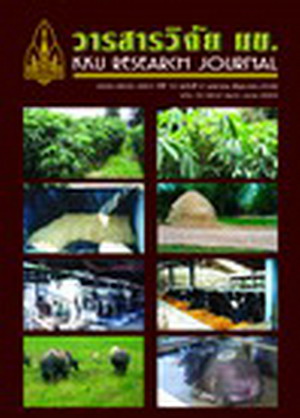Habitat evaluation and reproductive behavior of black-headed Ibis (Threskiornis melanocephalus) after reintroduction at Khao Khiew open zoo,Thailand(Thai)
Main Article Content
Abstract
Habitat evaluation and reproductive behaviors of ten black-headed ibis (Threskiornis melanocephalus) are investigated after release back to nature at Khao Kheaw Open Zoo, Chonburi province, Thailand. We found that all black-headed ibis used only one silk tree to rest, build their nests, lay their eggs, incubate and hatch their eggs and nurture their nestling. The reservoir at the botanic garden of the zoo is the feed source. Male and female black-headed ibis are similar. The ibis reaches puberty in 2 years. In the first year, one couple of black-headed ibis was mated and laid 2 eggs. All eggs were hatched to nestling but the nestling died because they fell from the trees. In the second year, 3 couples of black-headed ibis mated, laid and hatched 6 eggs, but only 5 nestling survived. The ibis took 3 days for laying and 18-20 days for incubating. The male and female of this species incubate and feed the nestling. The nestling will be trained to fly and become capable of flight after the flight feathers are fully developed.


